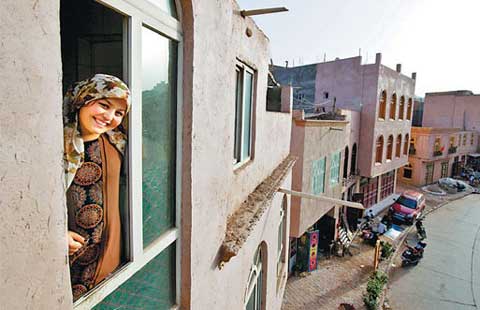American's lens captures priceless Chinese May 4 history
Updated: 2014-05-09 11:47
By Cheng Lu and Hu Tao (China Daily USA)
|
||||||||
|
American photographer Sidney D. Gamble (1890-1968) captured valuable historical moments with his camera during his stay in China in the early 1900s. Sidney D. Gamble |
A photo exhibition in Beijing marks the 95th anniversary of the May Fourth Movement, an important cultural and political movement in modern China. The images were taken by American photographer Sidney D. Gamble (1890-1968), grandson of James Gamble, one of the co-founders of Proctor & Gamble.
"In the early 1900s, photos were rarely seen in China, and few survive today," says Guo Junying, curator of the memorial. "Gamble captured valuable historical moments from the perspective of a sociologist and preserved those images well." T
The May Fourth Movement started with mass student protests on May 4, 1919, against the government's response to the Treaty of Versailles that imposed unfair penalties on China and undermined the country's sovereignty. It then began a national campaign to overthrow the feudal society and promote scientific and democratic ideas.
Hosted by the New Culture Movement Memorial of Beijing and Duke University Libraries, the exhibition displays 143 photographs showing China's May Fourth Movement and people's lives at that time.
The photographs include students delivering speeches, being arrested and protesting during the movement in 1919.
"They open a window for Chinese to better understand their history and complement existing historical documents for that period," Guo says.
Gamble worked as secretary for the Beijing Young Men's Christian Association, witnessing and documenting this pivotal time. In 1908, he began taking pictures in China during the first trip here with his family. He returned three more times between 1917 and 1932 and traveled widely, collecting data for socio-economic surveys and photographing urban and rural life, public events, architecture, religious statuary and the countryside.
About 15 years after Gamble's death, his daughter found his nitrate negatives in a closet at home in New York. Stored in beautiful rosewood boxes, the negatives were housed in individual paper sleeves, annotated with typed and handwritten captions. An agreement to bring the collection to Duke was signed in 2006.
"I was immediately fascinated by these images of Chinese life more than 100 years ago as I tried to figure out the location and background of each picture, and later as I translated their titles into Chinese. Since then, I have wanted to promote this collection to audiences around the world," says Zhou Luo, a researcher with Duke University.
Zhou started working on the metadata on the Gamble photographs in 2008, when the images had been sent to Duke after digitization.
Among the 5,000 photographs in this collection are about 2,000 images related to Beijing. "The majority of images were never published or exhibited during his lifetime," Guo says.
The memorial has received about 300 to 400 visitors on workdays and nearly 700 on weekends since the exhibition opened.
"In a picture that shows a traditional Chinese funeral, I saw a (rare, sacrificial) paper car. It's amazing. I never expected that these luxury sacrifices had such long history in China," says a visitor from Beijing.
A middle school student says that young Chinese lack such passion today and they need to learn from the spirit of the May Fourth Movement.
"The spirit involves patriotism, progress, democracy and science. While we make more money and enjoy a better life today, we need to seek spiritual pursuit and faith. This exhibition gives us a new perspective to know our history in a vivid and objective way," Guo says.
Xinhua
|
A child in a tiger costume. Sidney D. Gamble |
(China Daily USA 05/09/2014 page2)
Most Viewed
Editor's Picks

|

|

|

|

|

|
Today's Top News
US regulator will hear appeal on 'Big 4' Chinese affiliates
China: Stop harassing oil rig in Xisha Islands
American's lens captures priceless Chinese May 4 history
Creating a global dining kingdom
Court ruling on protester unsettling
Alibaba, ShopRunner to launch joint China service
US museum to return statue to Cambodia
Thai PM faces ban from politics
US Weekly

|

|

















